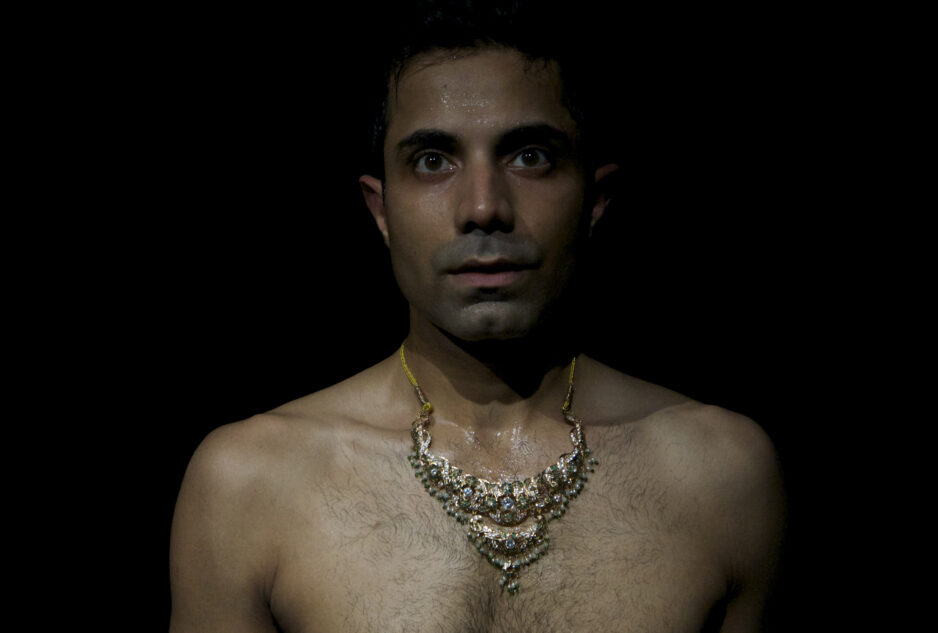
Image: Tukre, Raghav Handa - Photo: Dom O'Donnell
Home | Blog | Back to Garma
Back to Garma
Well another month has rolled around and I thought I’d be caught out with no dance on my calendar to write about. Then when all seemed lost I turned on my TV and after a short session of channel surfing, I came upon a feature from the Garma Festival, from the Gulkala grounds just outside of Gove in the Northern Territory. Seems everybody who’s anybody was up there. Even the Prime Minister was part of their scheduling of ‘bush university’ forums. Mr Albanese was talking with Aboriginal leaders over the push for the proposed referendum amending our constitution, to include a black fella presence, officially acknowledging our existence.
I just loved all the field reports and interviews where journalists were using the term ‘yarn’ for talking and I have never heard so many variations on the term Yolngu (pronounced yool- ngu). I remember being corrected by a Yolngu cultural consultant over the correct pronunciation and never forgot. In this context it’s just heartening to hear the languages that were born from the topographies and voiced by First Nations are finally being acknowledged and used by all of us.
Back to Garma. As I tuned in, a bunngal (dance) session was underway with two clans performing flag dances. The flag dances are a part of a song cycle which chronicles the early interaction with Indonesian sailors fishing and bartering for trepang or sea slugs.
All of a sudden I saw two dances I haven’t seen performed for a long time. Card dance and drinking dance. As an Aboriginal dance student from down south learning the dances for the first time I was embarrassed to perform the dances because we used to get a bad rap as drunks and the like. I suppose the audiences we were performing for wouldn’t have known that the dances form embodied repositories of history which predates British colonial settlement, so the people teaching us those dances just left them out of the song cycle to avoid potential controversy. But to see the dances performed at Garma was heartening, proof that we are inhabiting a great time of change.
By the way, I am writing to you from the lands of the Yugambeh people in Coolangatta as I am teaching some choreographic workshops as part of a Karul dance company intensive titled Ngari Ngali-Wahlu. Yesterday we learned dances from country all around this area on the Eastern seaboard of southern Queensland. One dance held within it the local knowledge of fishing practices whereby if too many fish were caught they were given back to the sea, for the dolphins to eat. This dance is vital and a symbol of the environmental zeitgeist, as it typifies the kind of ecological management we are all aiming for in this precarious time of environmental fragility.
Again I was both heartened, but also a little saddened. While I realised the country as a whole seemed to be finally lauding the progressive actions of the Yolngu in their long fight for self determination over their lands and livelihoods, which began with their famous 1963 bark petition comprised of three documents written in English and Yolngu Matha (language) and bordered by iconography similarly proving a continuous relationship with their country predating English colonial settlement, the focused attention on the Yolngu seemed to inadvertently perpetuate essentialist stereotypes of authenticity and legitimacy regarding indigeneity, as only belonging to the people with unbroken cultural lineages from remote areas.
Alternatively, just think about this young group Biren reviving Aboriginal language and knowledge in a park almost overshadowed by the numerous high rises containing tourists just like me.
Lastly, I’d like to mention I was part of a wedding party celebrating the marriage of choreographer Raghav Handa to his long time partner John Fanning. I tell you this because one of Raghav’s first full-length works was Tukre, which was presented and supported by FORM Dance projects, and within it he spoke with great sadness of the denied possibility of him as a gay man, having an Indian wedding to carry on his tradition. As he processed down a park trail, on a horse, on Sydney’s Northern Beaches dressed in full Indian regalia (complete with ornate pearl veil), his impossible dream was realised. I didn’t know what some, if not most, of his actions meant, nor could I fully apprehend the significance, I just knew that like the drinking and card game dances of the Yolngu, the importance lay in his determination to have them done and for us to witness them.
Not a bad month for dance after all eh!
Vicki Van Hout
FORM Blogger in Residence

